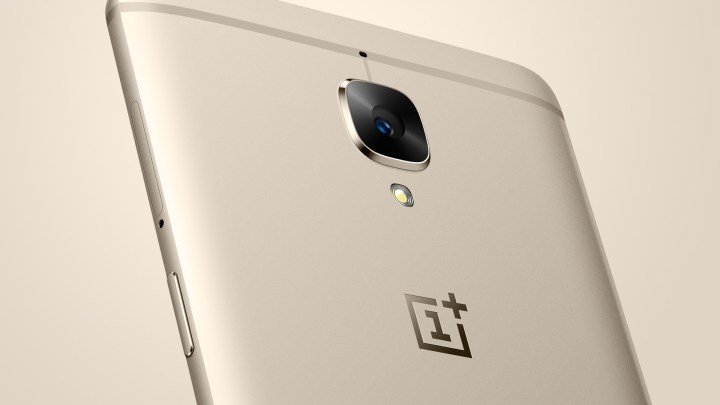
As far as the lack of any expandable storage is concerned, Pei said the 64GB of native storage the OnePlus 3 comes with is enough for most OnePlus users. According to Pei, the use of memory cards creates a negative user experience, since they are slower than the kind of internal storage the OnePlus 3 implements. Furthermore, the phone would need to make room for a memory card reader, thus making the device bulkier.
Moving on to the display, the OnePlus 3 implements what the company calls an “optic AMOLED” display. No, it is not a radical reinvention of the current AMOLED technology, said Pei. Rather, OnePlus tweaked the contrast and color temperature of its latest flagship’s display while also designing it to work well when viewed in bright conditions. In other words, “optic AMOLED” is nothing more than a PR term that means a slightly customized Super AMOLED display.
Related to the display technology is OnePlus’ choice to go with a 1080p display on the OnePlus 3 rather than joining other flagship phones in using a Quad HD display. According to Pei, using a higher-resolution display would only be beneficial for virtual reality, with such a display otherwise having its drawbacks, such as lower battery life. Because people will use the OnePlus 3 for non-VR purposes most of the time, having a 1080p display on the phone was the better decision to take.
As far as the OnePlus 3’s use of a 3,000mAh battery, Pei said such a battery size will get folks through a day with the phone. In addition, the phone’s Dash Charge capabilities ensures that charging the battery would not leave folks waiting very long.
Finally, a question most wanted answered was the aggressive RAM management on the OnePlus 3. On paper, the phone’s 6GB RAM would imply that folks would be able to open more than a few apps and not have them refresh when getting back to them. However, similar to what happened with the Samsung Galaxy S6, that has not been the case, as apps seem to close more prematurely than people expected.
Pei took to Twitter for this one, saying the aggressive RAM management on the OnePlus 3 is there to benefit the battery, thus offering a better user experience. Through XDA Developers, there is a technical “fix” that more than doubles the number of apps the OnePlus 3 holds in memory. However, this method has not been tested for possible performance or battery life issues, so try it at your own risk.
Editors' Recommendations
- Six months later, is the OnePlus Open still worth it? I found out
- The OnePlus 12R is still one of 2024’s best smartphone deals
- I did a OnePlus 12 vs. OnePlus 12R camera test, and there’s a big difference
- OnePlus just fixed a big issue with the OnePlus Watch 2
- The OnePlus Watch 2 is the Wear OS smartwatch I’ve been waiting for


